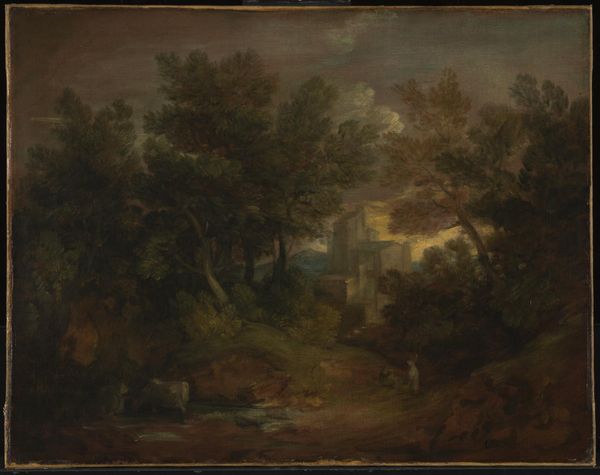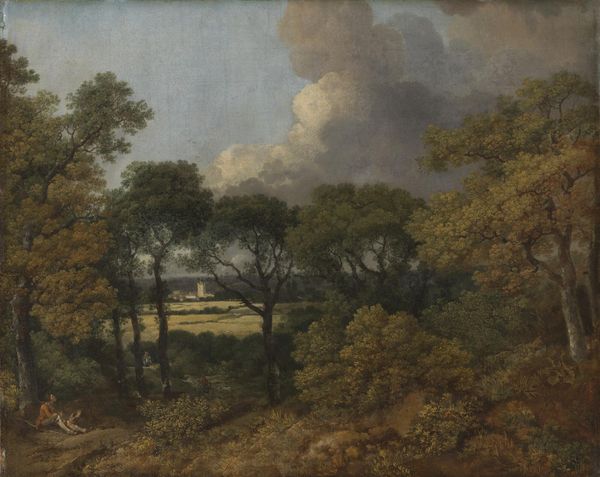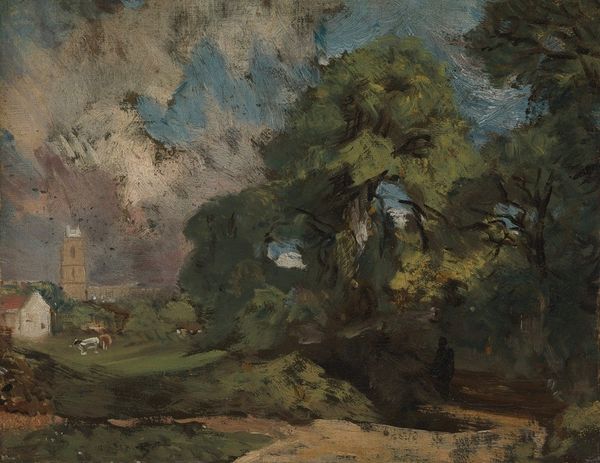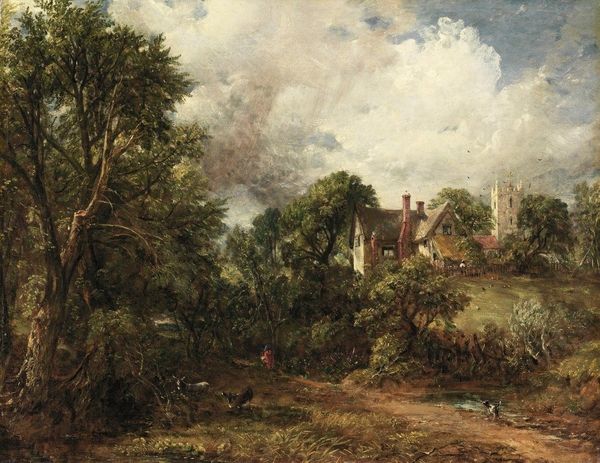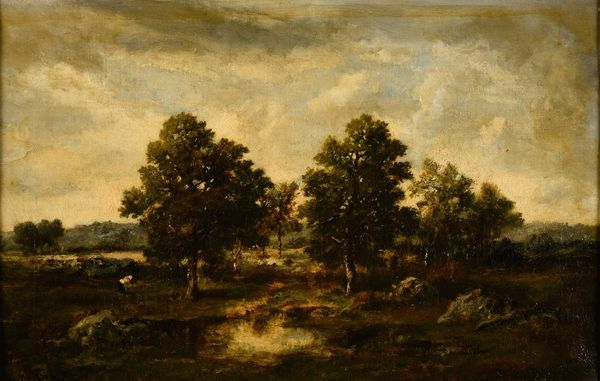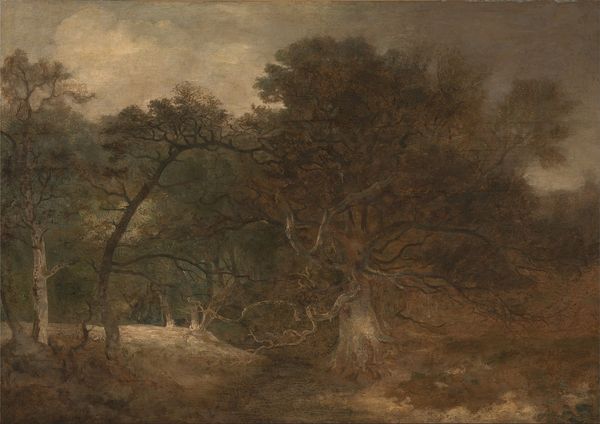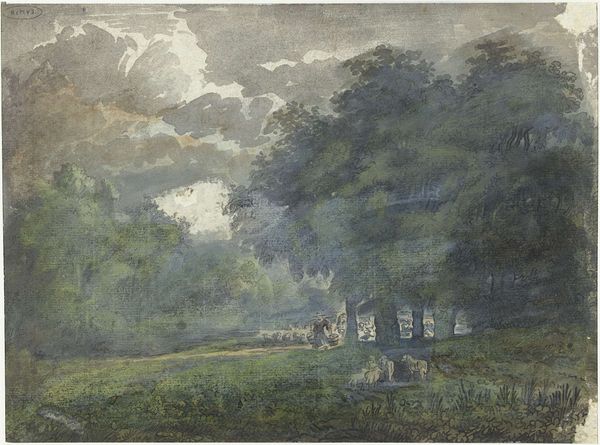
plein-air, oil-paint
#
plein-air
#
oil-paint
#
landscape
#
oil painting
#
romanticism
#
history-painting
Copyright: Public Domain: Artvee
Editor: Here we have "A Church in the Trees," an oil painting potentially by John Constable. There's a real contrast between the dark, earthy forest and the light, almost ethereal, church. What are your thoughts about the work? Curator: Well, looking at this piece through a materialist lens, I'm drawn to the act of its creation. Constable’s famous for painting 'en plein air,' directly experiencing the landscape. The quick, gestural brushstrokes speak to that immediate interaction with the environment. The material handling reveals so much. Editor: What do you mean by material handling? Curator: Think about the labor involved. This wasn’t produced in a pristine studio but, judging from the energy, directly in the field. Look at the paint application. Is it smooth, blended, academic? Or is it rougher, more concerned with capturing a fleeting moment of light? This physicality links the artistic act to a type of physical labor, not unlike working the land itself. What kind of context could that add to its reception by 19th century viewers? Editor: That's interesting. It wasn’t just about the finished image; it was about the process itself, tied to nature. How might the materials themselves -- oil paint, canvas, brushes -- contribute to the meaning? Curator: Exactly. Oil paint allowed for this kind of on-the-spot work, these impressions that capture a lived moment and can be traded or sold on a market. But more broadly, consider the availability and cost of these materials in Constable’s time. Access to art production was stratified, affected by material wealth and status. That very act of painting becomes part of a socio-economic structure. Editor: So, understanding the materials and how the artwork was produced changes our interpretation completely. I hadn't thought about the materials as being tied to larger economies and labor practices. Thanks! Curator: Precisely. Looking at art through this material lens lets us reveal these connections and rethink traditional notions of art, and what it means to be an artist.
Comments
No comments
Be the first to comment and join the conversation on the ultimate creative platform.
